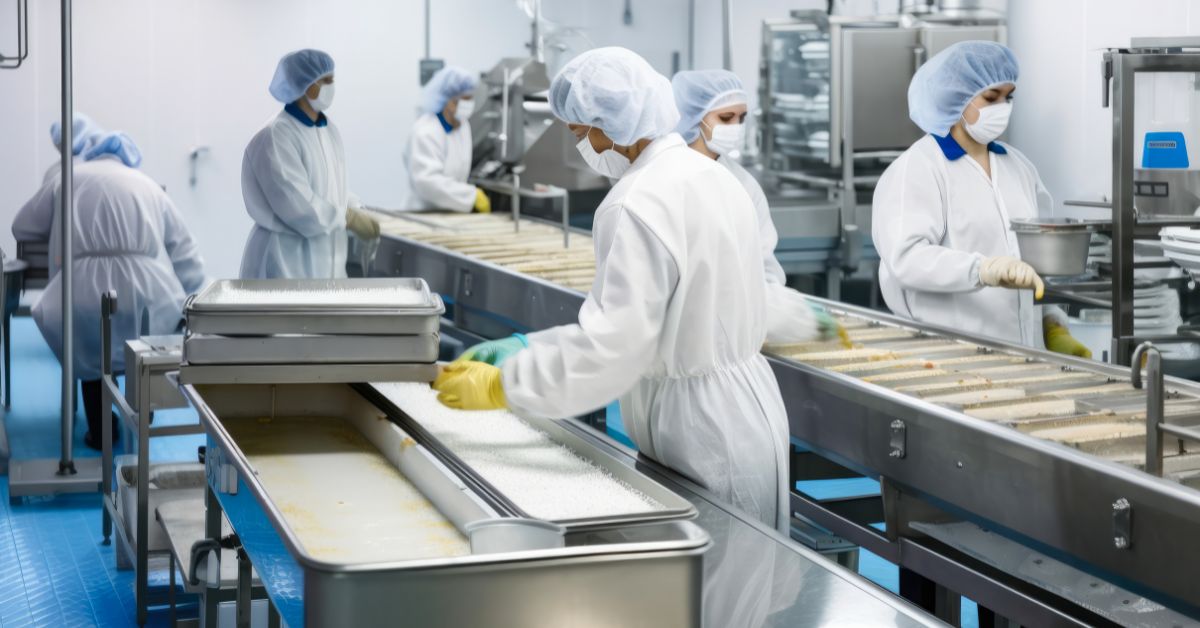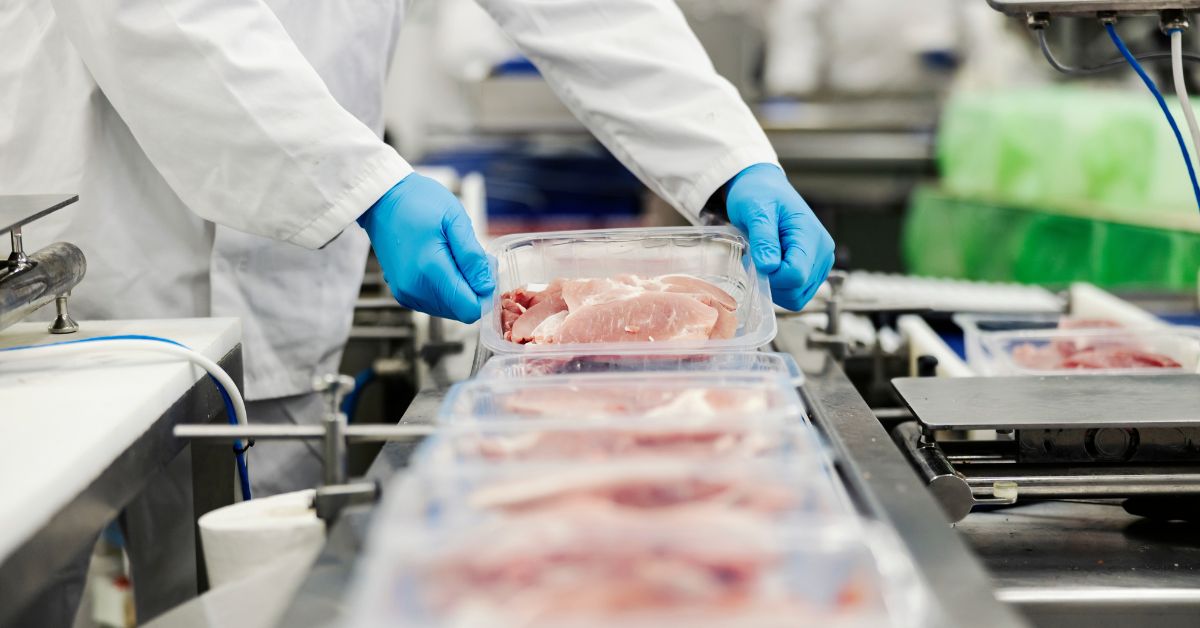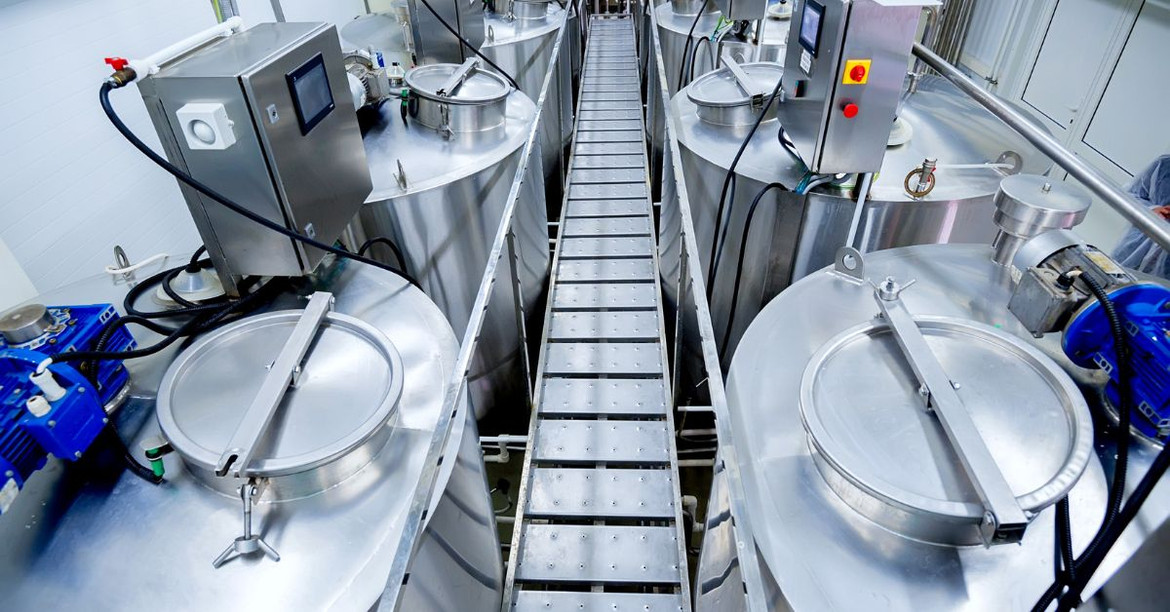15th May 2024
7 Ways Humidity Can Affect Food Processing
Monitoring environmental conditions is pivotal for ensuring the safety, quality, and longevity of food products. Among these factors, humidity significantly drives the outcome of food processing operations.
The relationship between humidity and food processing is complex, as this environmental parameter can affect everything from the raw material handling to the final packaging processes. High or low levels of ambient moisture can lead to a myriad of issues. Continue reading to discover the ways humidity can affect food processing and how to maintain optimal humidity levels for high-quality food items.

The Effects of High Humidity
Encourages Spoilage and Mold Growth
Elevated humidity levels expedite the deterioration of food products because the conditions become favorable for the proliferation of fungi and bacteria. These microorganisms flourish in humid environments, precipitating a spectrum of outcomes from mild deterioration to severe foodborne pathologies.
Moreover, fungal proliferation compromises the aesthetic and organoleptic properties of food items. It may also lead to the emission of mycotoxins that are detrimental to human health. Consequently, the implementation of humidity management strategies is indispensable in food processing environments to uphold product integrity and guarantee consumer safety.
Changes Texture and Appearance
The presence of high humidity disrupts the natural moisture balance in foods; it develops undesirable changes, such as sogginess in crispy products or hardening in products that are meant to retain moisture.
Additionally, humidity can instigate unwanted physical transformations, including crystallization in candies and sugar-based confections or coalescence in emulsified products. These modifications detract from the sensory experience offered by the food items and can interfere with their processing and packaging. The complicated handling operations greatly diminish the product’s value, as they no longer meet manufacturer and consumer standards.
Alters Shelf Life
Excessive heat and moisture accelerate various biochemical and microbial processes that lead to the degradation of food quality over time. This is notable in foods with high moisture content, where elevated humidity levels can precipitate the rapid loss of nutritional value, texture, and flavor.
The process advances due to enzyme activity and the growth of microorganisms that thrive in moist conditions. For example, enzymatic browning, a spoilage factor in fruits and vegetables, increases significantly in high humidity. Water vapor entering food packaging can also weaken moisture-sensitive preservation methods like freeze-drying or vacuum packing, speeding up spoilage.
The Effects of Low Humidity
Dries Out Products
Environments with low humidity levels—while advantageous for reducing microbial proliferation and spoilage—can increase the rate of desiccation in food products. Enhanced moisture loss adversely impacts the physical and sensory attributes of foods, as well as degrades their nutritional value. In low humidity conditions, dehydration especially affects perishables like fruits, vegetables, and meats. It can lead to diminished natural juiciness, altered texture, and degraded flavor profiles.
Additionally, the desiccation process may result in solute concentration. For example, brittle and fragmented baked goods and snacks exposed to such conditions have compromised structural integrity. Establishing a balanced temperature and air-water content during food processing is paramount to prevent excessive dryness.
Affects Crystallization
During the crystallization process, the reduced atmospheric moisture levels can lead to an imbalance in the supersaturation state of solutes. In the production of confectioneries, such as hard candies and chocolates, low humidity conditions exacerbate the premature and uneven crystallization of sugars. This causes a gritty or coarse texture that diminishes the product’s intended sensory attributes.
Crystallization under low humidity conditions disrupts the stability and homogeneity of fat-based systems within food products. The lack of moisture exacerbates the migration and coalescence of fat molecules, resulting in the formation of bloom—a whitish coating that alters the visual appeal and perceived quality of consumables.

The Challenges That Arise in Food Processing Due to Humidity
Humidity Causes Mixing and Blending Challenges
At the molecular level, humidity modulates the moisture content of both solid and particulate ingredients. It alters their flow properties and ability to mix and blend.
High relative humidity conditions increase the moisture content of hygroscopic materials, leading to agglomeration. This formation of clumps resists uniform dispersion within a mix. The cohesive forces induced by moisture absorption complicate the mixing process and affect the blend’s homogeneity. Therefore, food processors must work harder to break down agglomerates. In severe cases, they may have to reject an entire batch.
The reduced atmosphere due to low humidity enhances electrostatic charges on particle surfaces, especially in fine powders. They foster repulsion between particles, inhibiting their aggregation and impeding the blending efficiency. The resultant mix may exhibit poor compaction characteristics and inconsistent texture in the final product.
Furthermore, the physicochemical interactions between particles under varying humidity conditions can alter the rheological properties of blends. It impacts the viscosity of intermediate mixtures. Such modifications require adjustments in processing parameters—for example, mixing speed or blending time—to achieve the desired consistency. These aspects further complicate the manufacturing process.
Humidity Fluctuations Result in Packaging Concerns
The interaction between varying humidity levels and packaging materials presents several challenges. In particular, it influences the mechanical properties and effectiveness of barriers against moisture and gas.
In high-humidity environments, paper-based packaging is more likely to absorb moisture and weaken its tensile strength. The food is at a higher risk of contamination and spoilage.
Packages that cannot close entirely threaten the stability of the product’s shelf life. Materials prone to absorbing moisture might swell, and those in dry conditions could shrink. Such dimensional instability can cause issues like misaligned labels, improper cap fitting, or breaches in the packaging. These complications endanger the product’s shelf life and safety.
Chart Recorders: A Solution to Balanced Humidity Levels
Recognizing the ways humidity fluctuations affect all components of food processing highlights the importance of selecting appropriate materials and technologies to regulate the environment. Food processing and manufacturing plants are industrial settings. A rugged environment demands tough monitoring devices that won’t falter, no matter the conditions.
Implementing chart recorders paired with temperature chart recorder paper is the beginning of producing consistent and high-quality results. These reliable devices can withstand extreme temperatures, moisture levels, and more.
Using real-time monitoring devices will enable you to set optimal humidity levels within your food processing facility. With chart recorders in place throughout the food processing plant and establishing safe conditions, you’re increasing the quality and success rate of each developed product.

